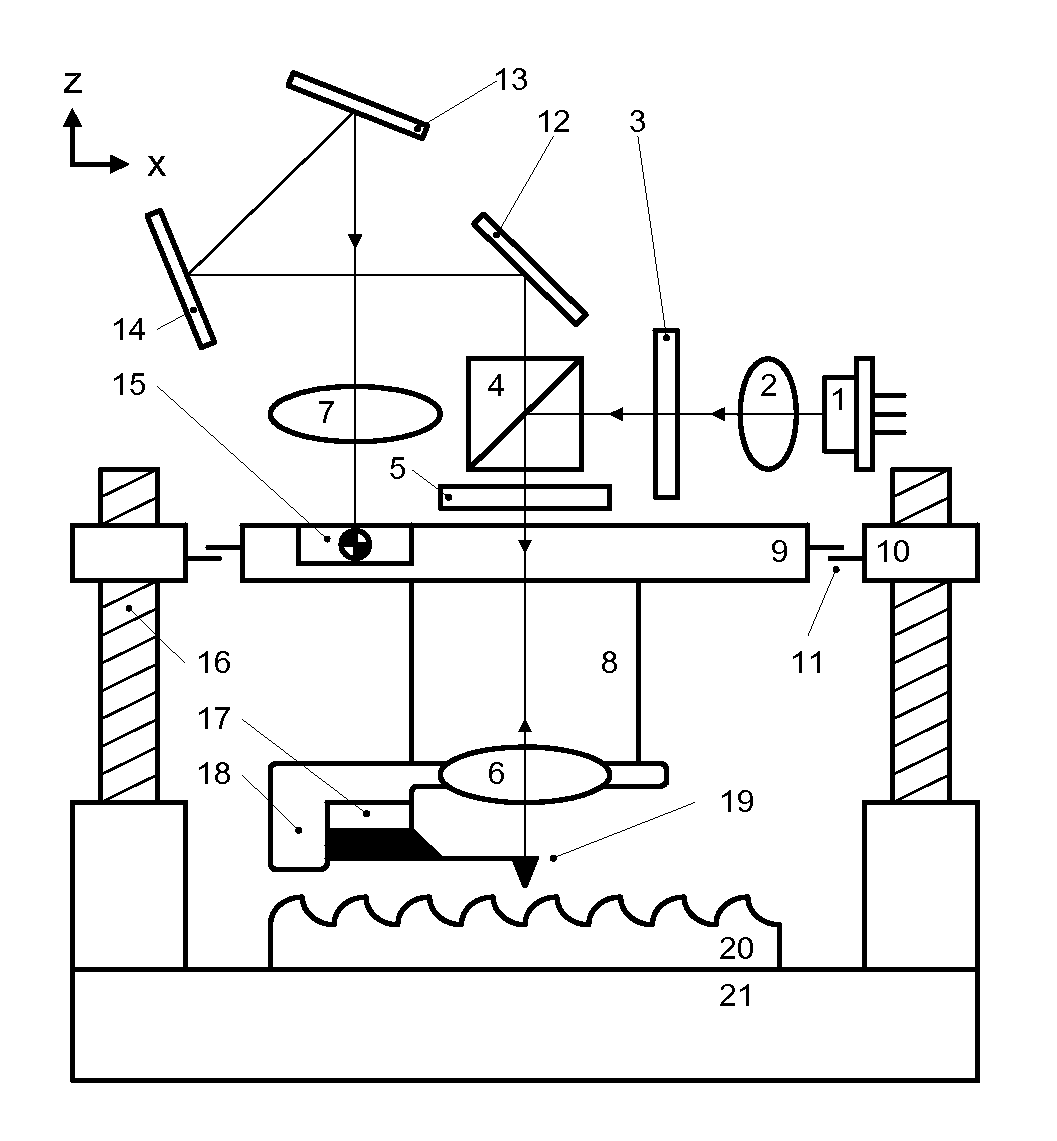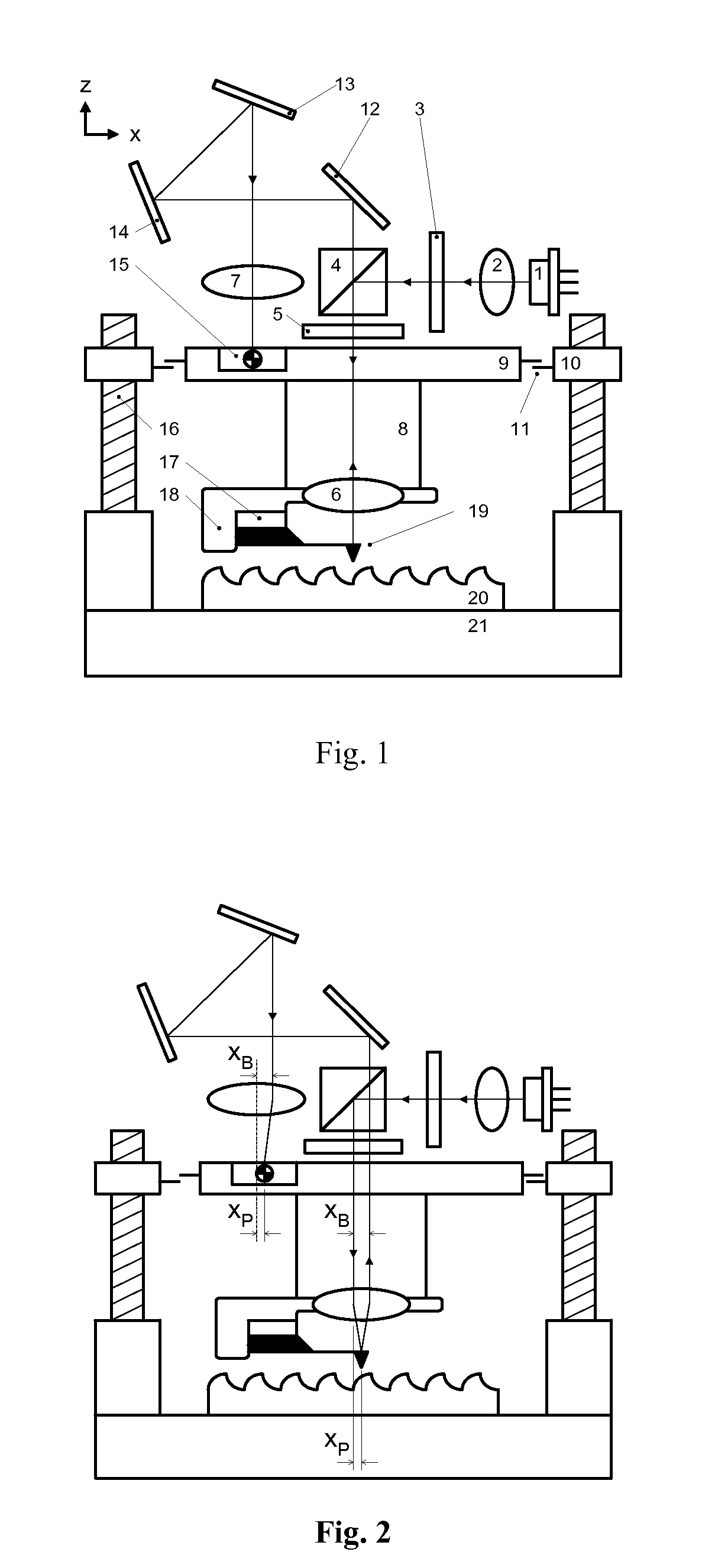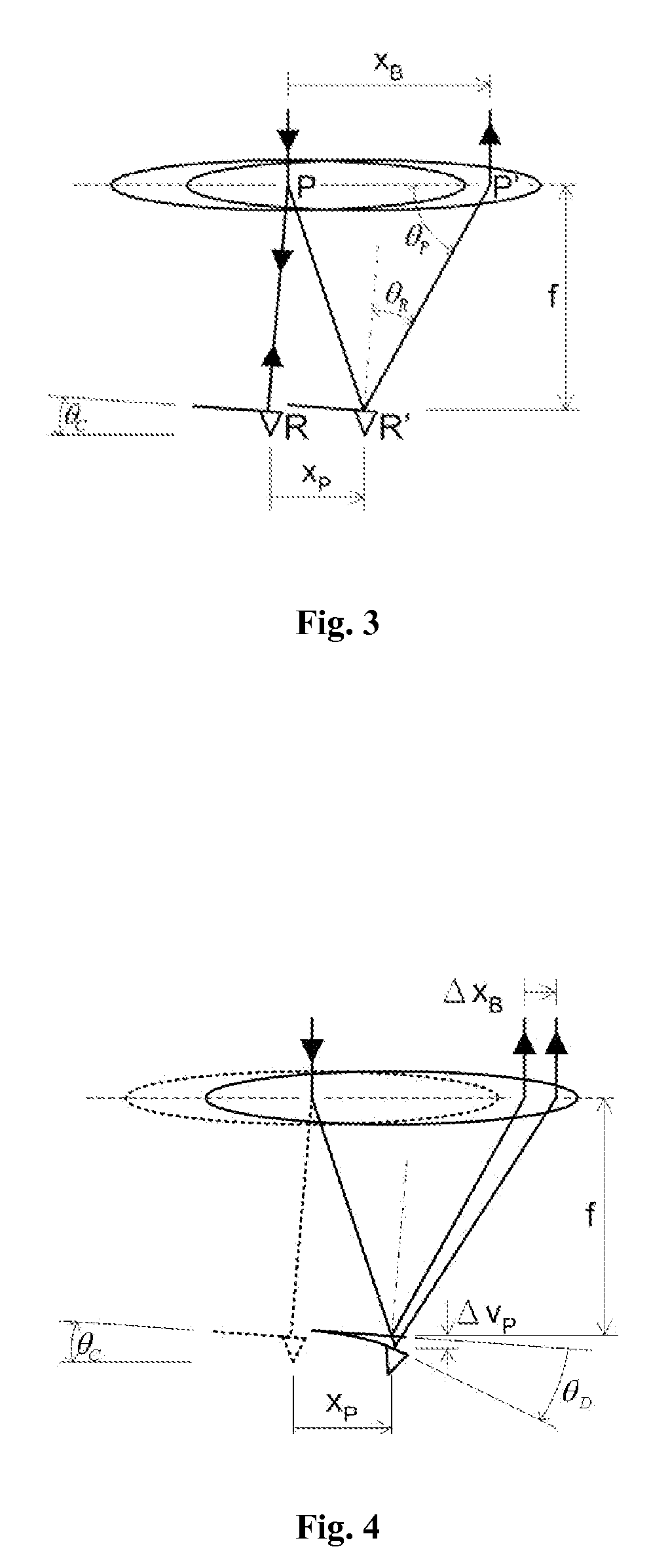Beam tracking system for scanning-probe type atomic force microscope
a beam tracking and scanning-probe technology, applied in the direction of mechanical measurement arrangement, mechanical roughness/irregularity measurement, instruments, etc., can solve the problems of affecting the performance of piezoelectric scanners, difficult to obtain correct images by using scanning-sample type afm, and problems such as the inability to move or position samples, so as to reduce horizontal and vertical tracking errors
- Summary
- Abstract
- Description
- Claims
- Application Information
AI Technical Summary
Benefits of technology
Problems solved by technology
Method used
Image
Examples
Embodiment Construction
[0029]FIG. 1 shows the systematic diagram of the beam tracking system for the scanning-probe type atomic force microscope of this invention. As shown in this figure, the beam tracking system for the scanning-probe type atomic force microscope of this invention comprises a base unit, a laser source unit, an optical unit and a feedback unit. In these units, laser source 1 is used to generate a laser beam. The laser beam generated by laser source 1 is collimated by a collimation lens 2, polarized by a polarizer 3 and enters a beam splitter 4. The laser beam is then partially reflected and reaches the objective lens 6 through the ¼λ wave plate 5. The probe 19 is positioned at approximately the focal point of the objective lens 6, where the objective lens 6 focuses the laser beam at the probe 19. The laser beam reflected from the probe 19 contains deflection information of the probe 19. It reaches mirrors 12, 13 and 14 via objective lens 6, ¼ wave plate 5 and beam splitter 4, and is intr...
PUM
| Property | Measurement | Unit |
|---|---|---|
| scanning distance | aaaaa | aaaaa |
| scanning distance | aaaaa | aaaaa |
| scanning distance | aaaaa | aaaaa |
Abstract
Description
Claims
Application Information
 Login to View More
Login to View More - R&D
- Intellectual Property
- Life Sciences
- Materials
- Tech Scout
- Unparalleled Data Quality
- Higher Quality Content
- 60% Fewer Hallucinations
Browse by: Latest US Patents, China's latest patents, Technical Efficacy Thesaurus, Application Domain, Technology Topic, Popular Technical Reports.
© 2025 PatSnap. All rights reserved.Legal|Privacy policy|Modern Slavery Act Transparency Statement|Sitemap|About US| Contact US: help@patsnap.com



